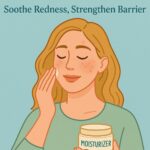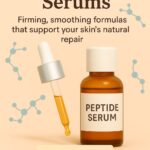
Some skincare pairings quietly cancel each other out. Others spike redness, peeling, or breakouts that were not there before. You do not need to memorize a chemistry textbook to avoid trouble. The winning approach is simple: understand why clashes happen, choose one strong active per session, and separate anything that competes on pH or that doubles up on exfoliation. This guide explains the common traps in plain English, gives safe alternatives, and shows you how to structure an AM and PM plan that delivers clear pores, smoother texture, and calmer skin. Use it to stop the whack-a-mole cycle where you fix one issue and create two new ones, then lock in a weekly map that keeps progress steady.
Why Certain Mixes Backfire
Most clashes come from three levers: pH conflict, over-exfoliation, and instability. Strong acids like AHAs and BHAs work best at a lower pH. Retinoids do not need a low pH to work, and stacking them with acids in one pass often means you get the worst of both worlds, more irritation with no extra results. Oxidizers like benzoyl peroxide can also reduce the effectiveness of what they touch if layered at the same time, which is why pairing it directly with ascorbic acid vitamin C is a known headache. There is also the simple math of barrier load. Two exfoliants plus hot water plus astringent toner equals a tight, shiny face that pumps out more oil by noon. Finally, format matters. Oils over fresh sunscreen can disturb that protective film, while fragrance near retinoids or acids increases sting and watering eyes. When in doubt, keep one driver active per routine, buffer with moisturizer, and use daily SPF to protect gains.
The Clash List and Safer Swaps
Before you memorize combos to avoid, lock in the decision rule: separate strong actives by time or by day, and match each active to the job you want it to do. That way you are not asking one session to clear clogs, brighten tone, rebuild texture, and calm redness all at once. The pairs below are the most common traps. For each, you will see why they underperform and a simple way to rewire your routine so you still get the benefit without the backlash. Use these as defaults, then adjust cadence by how your skin actually feels over two to four weeks. If you ever see sudden peeling, a sandpapery feel, or hot pink flush after basic steps, pull back frequency before you change products.
- Retinoids + Benzoyl Peroxide (same time): higher irritation and reduced retinoid stability.
Do instead: benzoyl peroxide in the morning, retinoid at night, or alternate nights. - Strong Acids (AHA or BHA) + Retinoids: double exfoliation raises peel risk without better results.
Do instead: acid night and retinoid night on different days. Add a moisturizer-only night if dry. - Ascorbic Acid Vitamin C + Benzoyl Peroxide: peroxide can oxidize fresh vitamin C.
Do instead: vitamin C in the morning under SPF, benzoyl peroxide at night. - Vitamin C (ascorbic acid) + Strong Acids in one pass: pH stacking invites sting.
Do instead: vitamin C AM, acids PM on non-retinoid days. - High-dose Niacinamide + Strong Acids: can flush or feel prickly on sensitive skin.
Do instead: keep niacinamide to 2–5 percent with gentle routines or SPF, run strong acids on separate nights. - Copper Peptides + Direct Acids or Pure Vitamin C: may reduce peptide activity and raise irritation.
Do instead: peptides on rest nights, acids or vitamin C in a different routine. - Exfoliating Acids + Physical Scrubs: over-exfoliation and micro-tears.
Do instead: pick one method per day. If you like scrubs, keep them short and gentle on non-acid days. - Retinoids + Hair Removal (wax or depilatory) same day: higher risk of skin lift and irritation.
Do instead: pause retinoids two to three nights before and after waxing. - Hydroquinone + DIY Strong Acid or Retinoid stacks: irritation and rebound pigment risk.
Do instead: keep routines simple and buffered, or follow a professional plan only. - Actives + Fragrance or Essential Oils near eyes: tears and dermatitis increase.
Do instead: fragrance-free near eyes, mineral SPF and gentle creams only on the orbital area. - Sunscreen film + Face oil on top: oils can disturb the UV film.
Do instead: oils under SPF or skip oils in daytime, SPF is the last skincare step before makeup. - Multiple new actives at once: you cannot trace the culprit.
Do instead: add one new product every 10–14 days and keep brief notes.
Build a Calm, Effective Routine (AM and PM)
Think in lanes. Each routine gets one driver active and a few supporting steps to keep the barrier steady. Choose by your main need that season, then adjust every four to six weeks.
Morning plan, 6 minutes total
- Cleanse lightly if oily in the morning, otherwise water rinse.
- Treatment lane: Vitamin C serum for brightening, or Niacinamide 2–5 percent for oil and redness control.
- Moisturizer: light gel-cream if oily, lotion if normal or dry.
- Broad-spectrum SPF 30+ as the last skincare step. If you use makeup, give SPF one minute to set.
Night plan, 8 minutes total
- Gentle cleanse for 20–30 seconds. No squeak.
- Active lane: one only.
- AHA 5–10 percent for dullness or rough patches, two to three nights weekly.
- BHA 0.5–2 percent for clogged look or blackheads, two to three nights weekly.
- Retinoid for texture and tone support, start twice weekly then build to three or four.
- Moisturizer: thin layer to seal. If sensitive, try the buffer method: moisturizer, active, thin moisturizer again.
- Eye area: keep simple. Plain cream and mineral SPF by day are enough for most people.
Weekly Map and Troubleshooting
A map removes guesswork. Here is a balanced example you can copy and adjust. It respects pH conflicts, keeps exfoliation under control, and gives the barrier true rest days.
- Mon: BHA night
- Tue: Moisturizer only or peptide serum
- Wed: Retinoid night
- Thu: Moisturizer only
- Fri: AHA night
- Sat: Retinoid night
- Sun: Rest night, richer moisturizer
Shiny by lunch: use niacinamide under SPF and blot papers instead of stacking powder. If oil still floods through, add a tiny press of translucent powder only on the T-zone after sunscreen sets.
New flakes or stinging: cut your active frequency in half for two weeks and add a ceramide cream at night. Resume slowly.
Pilling under makeup: shorten layers and wait 60–90 seconds between steps. Swap one silicone-heavy product for a lighter texture.
No visible progress at week six: check if you are still stacking a clash somewhere. Simplify to one driver lane per session, then revisit cadence.
Final Thoughts
Your skin does not need heroics. It needs consistency. Most clash pain comes from trying to do everything at once. Pick the lane that matches your main goal this month, separate the known conflicts by time or by day, and keep SPF steady in the morning so last night’s work is not erased by the sun. If you get off track, do not add more products. Reduce frequency, return to one driver active per routine, and let your barrier settle for a week. Progress shows up as fewer surprise breakouts, less mid-day shine, and makeup that sits flatter without extra effort. Once you feel that calm baseline, you can raise or lower cadence in small steps and keep your results without the roller coaster.
See also
If your base routine feels tight one day and slick the next, read Skin pH Basics: Why It Matters and How to Keep Balance to steady cleansing and actives so products stop fighting each other. When you want gentle texture work that will not spike redness, Best Exfoliators for Sensitive Skin compares low-irritation picks and how to pace them on real schedules.
Planning your evening lane, Retinol vs Retinal: Which One to Start With explains strengths, side effects, and realistic timelines so you can pick the right on-ramp. If oil and redness are your main complaint, Niacinamide Myths vs Reality: What It Can and Cannot Do sets sensible dosing and expectations. To round out a calm lineup, Ceramide Moisturizers for Damaged Skin Barrier highlights simple formulas that play well with everything above.
FAQs
1) Can I ever use acids and retinoids on the same day
You can, but make it advanced. Run an acid morning for a short contact time and retinoid at night, or better, alternate days. If you see redness or new flaking, back off to separate nights only.
2) How long should I wait between vitamin C and sunscreen
After vitamin C, give it about one minute to settle, then apply broad-spectrum SPF 30 or higher as your last skincare step. Waiting longer is fine, but not required for most textures.
3) Is niacinamide safe with everything
It pairs well with many steps, but high doses with strong acids can feel prickly on sensitive skin. Keep niacinamide at 2–5 percent and move acids to a different night if you notice flushing.
4) I keep getting pilling after I separate clashes. What now
Shorten routines to three layers maximum in the morning and three at night. Let each step set for 60–90 seconds. Replace one silicone-rich product with a gel-cream and avoid rubbing during application.
5) Do I need rest nights if my skin is not irritated
Yes. Rest nights help the barrier keep up with progress. One to two rest nights per week maintain gains, reduce purge risk, and make your actives work better over time.
Affiliate Disclosure
If you purchase through links on our site, we may earn a small commission at no extra cost to you.




